
Common Running Injuries: Symptoms, Prevention and Treatment
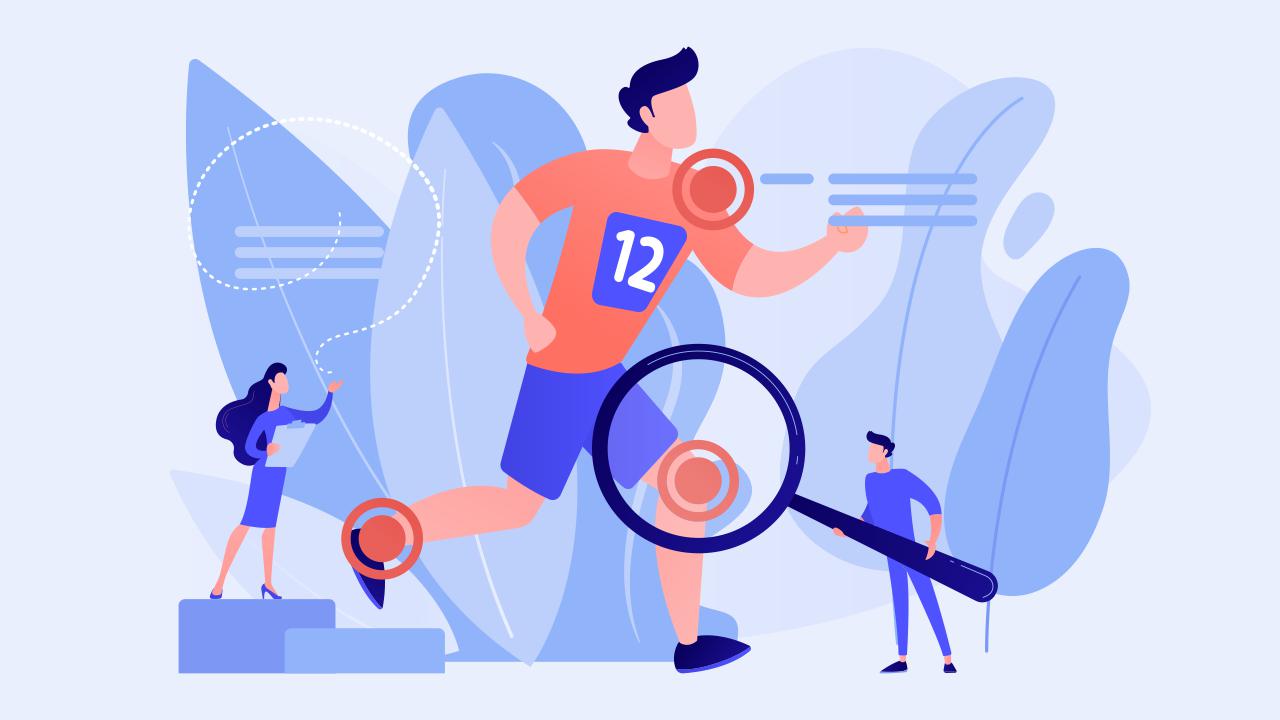
Studies estimate that anywhere between 27% and 70% of runners get injured in a year. The studies have been conducted on runners, who generally run a minimum distance of 20km a week and have been running consistently for at least one to three years. In one of the studies, Dutch professor and human movement science expert W Van Mechelen (Sports Med, 1992), estimates that 50% to 70% of all running injuries are due to overuse and training factors. The rest account for anatomical, gender, and age-related factors.
Sports Medicine Australia reported that 42% of all running injuries are to the knee, 17% to the foot or ankle, 13% to the lower leg, and 11% to the hip or pelvis. The table below shows that the five most common injuries are runner’s knee (patellofemoral syndrome), iliotibial band syndrome, plantar fasciitis, shin splints (tibial stress syndrome), and Achilles tendinitis.
Risk factors
Risk factors for overuse running injuries are running distance, training intensity, rapid increases in weekly mileage or intensity, and pre- and post-exercise stretching habits. These variables have been fitted into a stress-frequency graph by experts Reed Ferber and Shari Macdonald. The X-axis shows training distance or weekly mileage. The Y-axis denotes intensity, which can happen if we do too many hard workouts in a week.
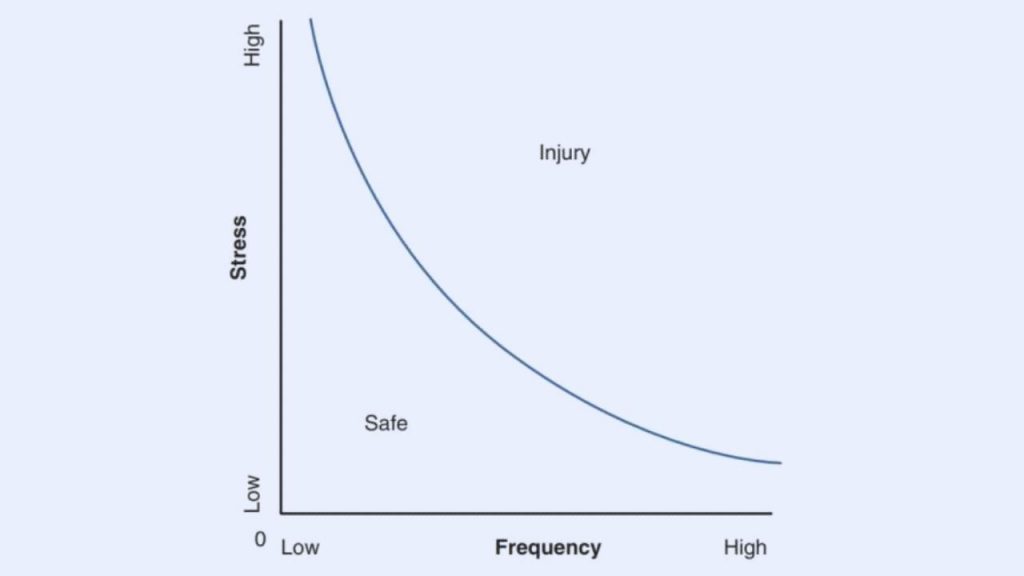
When we view the graph, we can see that if the training intensity and the weekly mileage are both high, you may enter the injury zone. However, if you increase weekly mileage, you may avoid injury by reducing the number of hard training sessions in the week.
Common runner injuries
Let us discuss a few common running injuries with their symptoms and causes. We have also listed a few running injury prevention ideas and ways to treat them.
1. Runner’s knee
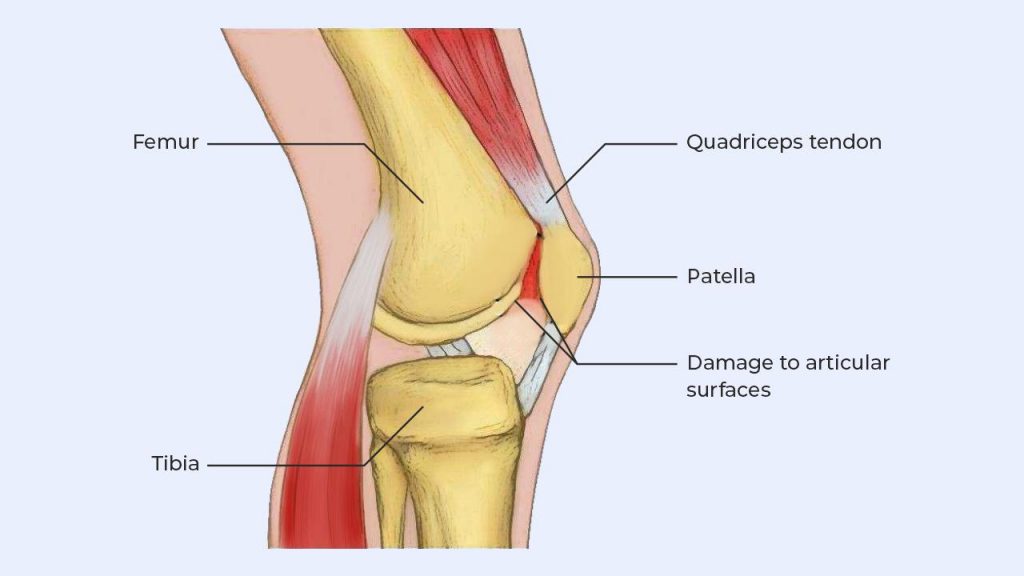
Runner’s knee is the most common sports injury in runners. The kneecap (patella) sits inside the patellar tendon and is connected to the quadriceps muscles. The direction in which the patella moves is directly related to the forces from the quadriceps. The patella has a thin layer of cartilage on its underside. This may get irritable or tear when the injury sets in.
Symptoms
- Pain behind the patella or kneecap
- The pain sets in about an hour into your run
- It is worse as soon as you stop running
- The knees feel sore when you climb stairs
Causes
- The patella moves or tracks in a groove on the thigh bone. If the patella does not track properly in this groove due to unequal strength in the quads, it can cause pain
- Weak hips and glutes leading to a wobbly pelvis
- In women, it may be due to large hips narrowing down to the knees
Preventive measures
Here are a few sports injury prevention tips that can help avoid the occurrence of runner’s knee:
- Strengthen hips, knees, and quads through exercises like squats, split squats, walking lunges, multi-directional lunges, planks, mountain climbers
- Stretch leg muscles thoroughly after every run
- Employ proper running form — maintain an upright posture and avoid overstriding
- If your foot tends to collapse inward too fast, choose appropriate shoes or use an insert to correct it
Treatment
- Step back from training by reducing weekly load if the pain is mild and tolerable. Eliminate all forms of hard training such as speed workouts till the pain subsides.
- Rest for three-four weeks and move to cycling, swimming, or walking if the pain is substantial. Meanwhile, use strengthening exercises and work the upper body as well.
- Use an ice pack on the knees and apply it for at least five minutes, three-four times a day.
- If the pain persists after six weeks, consult a doctor.
2. Iliotibial band syndrome

This common sports knee injury occurs on the outer side of the knee. The iliotibial band is a thick tendon that connects the tensor fascia latae (muscle on the outer side of the hip) to the shin bone (on the outer side of the tibia). The pain is caused by the iliotibial band becoming tight or inflamed. It causes friction due to rubbing on the outside of the knee.
Symptoms
- Pain on the outside of the knee
- The pain worsens while running and stops when you stop running
- There is a pain when you descend stairs but no pain when you ascend
Causes
- Weak core and hips
- Rapid increase in training load
- Improper or worn-out shoes
Preventive measures
Here are some running injury prevention exercises to avert iliotibial band syndrome:
- Strengthen the hips with exercises like bridge extensions, lateral lunges, lying side leg raises, lateral walks with a resistance band
- Stretch the iliotibial band–side bends, forward bends, low lunge bend variations
- Stretch the glutes
Treatment
- Rest for three to four weeks and move to cycling, swimming, or walking
- Stretch the iliotibial band with a foam roller
- Replace shoes
- Use strengthening exercises as indicative above
- Use an ice-pack on the knees and apply it for at least five minutes, three to four times a day
- If the pain persists after four weeks, visit a doctor
3. Plantar fasciitis

Plantar fasciitis is an inflammation of the plantar (bottom of the foot) fascia, which is a band of connective tissue running from the heel bone to the front of the foot. The injury happens at the point where the fascia inserts into the heel bone. Inflammation and pain come from excessive tension in the fascia. The calf muscles, when too tight, can pull on the heel bone, and in turn, stretch the fascia too much.
Symptoms
- Sharp pain on the inside of the heel
- The pain is intense when you step out of bed in the morning, place your foot on the floor, and stand up
- Pain reduces as you keep moving
- Pain sets in as soon as you run and worsens unless you stop
Causes
- Tight calf muscles and Achilles tendon
- Weak shin muscles
- Overweight
- Flat or too high arches on the feet
Preventive measures
Following these safety measures to prevent sports injuries can help you avoid plantar fasciitis:
- Strengthen the plantar fascia with eccentric calf raises
- Stretch the plantar fascia with a tennis ball at least three to four times a day
- Stretch the calves and Achilles tendon at least three to four times a day
Treatment
- Take a break from running. The length of the break depends on how fast the fascia heals
- Stick to upper body strength workouts during the break
- Stretch and strengthen as prescribed above
- If the pain persists beyond four or five months despite home-based remedies, visit a doctor
4. Shin splints
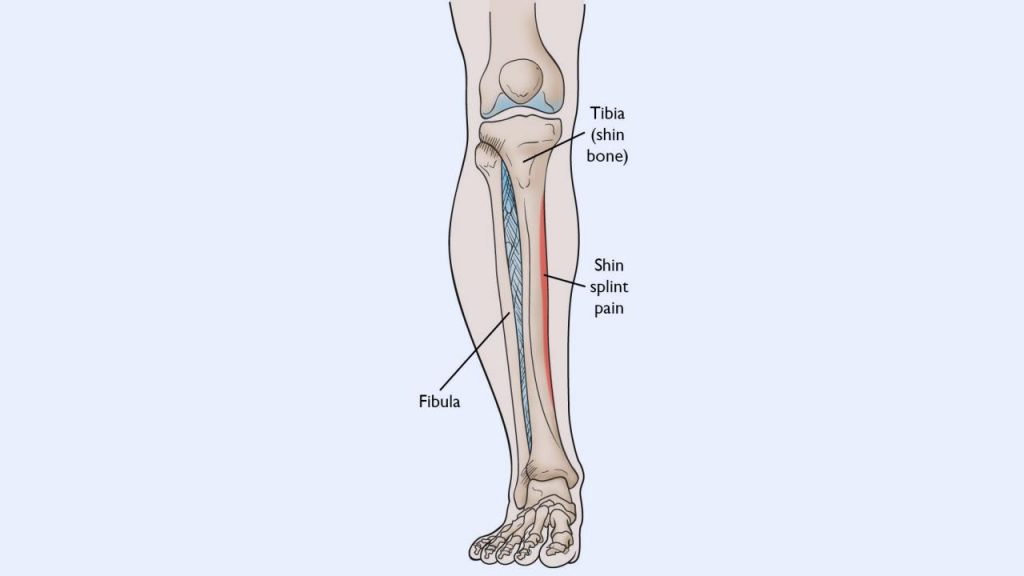
This is a pain in the bony part of the shin along the tibia during and after exercise, and also when you put pressure on the affected part. It is caused by either an irritation or swelling in the bone.
Symptoms
- Dull pain in the shin
- Pain begins when you initiate the run, then diminishes, and again sets in when you finish
- If you continue running, the pain will increase in intensity and will bring you to a stop
- Initially, the pain comes up only during exercise. Soon, it becomes chronic and persists even at rest. If not treated in time, the shin splint may progress to become a stress fracture
Causes
- Increasing training load too fast
- Weak shin muscles (anterior tibialis and posterior tibialis)
- Being overweight
- Your foot tends to collapse inward too fast
Preventive measures
- Strengthen the shin muscles by exercises like calf raises, toe raises
- Stretch the shin muscles as well as the calves
- Employ proper running form — avoid overstriding (shorten your stride)
- Use proper running shoes
Treatment
- Rest for three or four weeks and move to cycling, swimming, or walking
- Stretch the shins and calves with a foam roller
- Replace shoes or use an insert to prevent excessive foot inward roll
- Use strengthening exercises as mentioned above
5. Achilles tendinitis
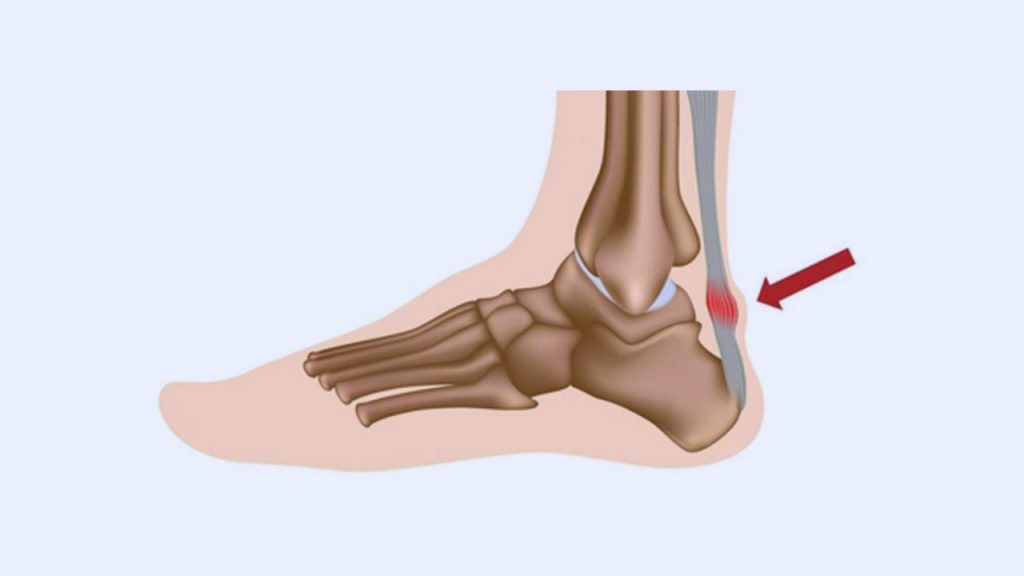
The Achilles tendon is a thick rope-like tendon that connects the calf muscle to the heel bone. The location of the pain is at the heel, or on the tendon itself, or where the calf muscle forms a V-shape at the origin of the tendon.
Symptoms
- Stiffness in the Achilles tendon first thing in the morning
- Progresses to pain in the Achilles tendon itself and at the insertion point on the heel bone during the run
Causes
- Increasing and sustaining high training loads
- Improper or worn-out shoes
Preventive measures
Here are two important running safety tips to keep in mind to safeguard yourself from Achilles tendinitis:
- Strengthen the calf muscles through exercises like single-leg calf raises, single-leg bent knee calf raises, farmer’s walk on the toes, split jumps
- Stretch the calf muscles and the Achilles tendon through straight leg calf stretch, bent leg calf stretch
Treatment
- Rest for three or four weeks and move to cycling (if there is no pain when pedaling), swimming, or walking
- Apply ice on the tendon for five minutes three or four times a day
- Replace shoes or use an insert to prevent excessive foot inward roll
- Use strengthening and stretching exercises as indicative above
- If the pain persists beyond three months despite home-based remedies, visit a doctor
Injuries are a common occurrence in runners, often leading to prolonged periods of reduced activity or complete inactivity. A graded increase in training, proper footwear, pre- and post-exercise stretching, and maintaining proper gait while running can help in the prevention of these injuries. In case there’s an injury, consult your physician and follow the instructions related to the sports injury treatment procedure for faster recovery and reduced chances of injury in the future.
References
1. Hreljac A. Etiology, prevention, and early intervention of overuse injuries in runners: A biomechanical perspective. Physical Medicine and Rehabilitation Clinic of North America 2005; 16: 651–67 https://pubmed.ncbi.nlm.nih.gov/16005398/
2. Mechelen VW. Running injuries. A review of the epidemiological literature. Sports Med 1992; 14: 320–35.https://pubmed.ncbi.nlm.nih.gov/1439399/
3. Training Variables For Running Can Lead To Overuse Injuries. Human Kinetics. https://us.humankinetics.com/blogs/excerpt/training-variables-for-running-can-lead-to-overuse-injuries (accessed Apr 9, 2021).
4. Facts on running injuries. Sports Medicine Australia. https://sma.org.au/resources-advice/running/#:~:text=42%25%20of%20all%20running%20injuries,inappropriate%20surfaces%2C%20terrain%20and%20footwear (accessed Apr 9, 2021).














